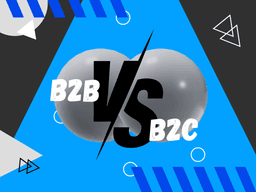/ Marketing Mix: The 4 Ps of Marketing and How to Use Them
Marketing Mix: The 4 Ps of Marketing and How to Use Them

Uncovering a powerful in-depth marketing strategy requires a differentiated understanding of the marketing mix, a comprehensive framework that navigates multiple viewpoints and dimensions. Traditionally packaged in terms of the well-known 4Ps—product, price, placement and promotion—the marketing mix is created as the basis for developing an effective marketing plan, which can hopefully lead the business to more strategic success.
Marketing Mix: What is it?
The marketing mix is not a one-size-fits-all marketing technique; rather, it covers a spectrum of essential elements for a comprehensive marketing plan. Initially conceptualized as 4P, this paradigm invites marketers to take a holistic approach to the strategies they develop, avoiding focused messages that are too narrow in scope. In fact, the essence lies in implementing the 4Ps which are applied simultaneously, thereby enabling marketers and businesses to make the right decisions when launching new products or updating existing products.
Digging into the 4P Marketing Mix:
Created by a well-known figure in the marketing realm, E. Jerome McCarthy, in 1960, the 4Ps have stood the test of time. Industry-specific and audience-centric, these components—product, price, placement, and promotion—are the foundation of a successful marketing strategy.
Product
It refers to tangible or intangible offerings designed to meet customer needs. Marketing a product effectively involves identifying differentiators from competitors by providing other, more attractive offers or prices, thereby creating a unique value proposition.
Price
The selling price reflects the consumer's willingness to pay. Marketers and companies prioritize the costs or prices that consumers have to pay, and use value-based pricing, centered on the quality and value perceived by consumers.
Placement:
Distribution channels are determined by product type. Essential items can be found in many stores, while premium items may be strategically exclusive to certain outlets. This specialized and distributed placement influences consumers' views and psychology.
Promotion
Crafting a cohesive message across advertising, sales promotions, personal selling, and public relations constitutes the promotional mix. Consideration of budget, choice of media, and frequency of communication are very important in achieving marketing goals.
Other Marketing Tools You Can Use
Given the diverse business landscape, not all marketing is product-focused. Businesses in the service sector, especially those that emphasize customer service, are introducing additional 3Ps: people, process, and physical evidence.
People:
Representing employees in interacting with customers, this includes consideration of company culture and customer relationship management aimed at fostering brand loyalty.
Process
Involves the method or flow of service provision, focusing on customer satisfaction through monitoring and improving efficient service performance.
Physical Evidence
Covers the areas where customer-company interactions occur, including packaging, layout, and overall atmosphere that reinforces brand identity and creates additional value for customers.
Marketing Mix Objectives:
In essence, the marketing mix aims to promote products or services, which ultimately generates revenue for the company. This integrated approach combines key strategies to build brand awareness, grow customer loyalty and drive product sales.
Another Alternative: 7P Marketing Mix
Although the 4Ps introduced by McCarthy remain the basis of the marketing mix, the expanded marketing mix introduces other 3Ps in addition: people, physical evidence, and process. These additional components broaden the strategic scope, including considerations such as employee engagement, packaging aesthetics, and logistics efficiency to ensure a seamless customer experience.
Developing an effective marketing plan requires a comprehensive understanding of the marketing mix, and recognizing its multidimensional nature. Rooted in McCarthy's timeless framework, the 4 Ps form the foundation, with the recognition that businesses, each unique in their own right, can incorporate the other 3 Ps to adapt their strategy. Together, these tools orchestrate a symphony of promotions, brand awareness, customer loyalty, and, ultimately, revenue generation for a business.
























































